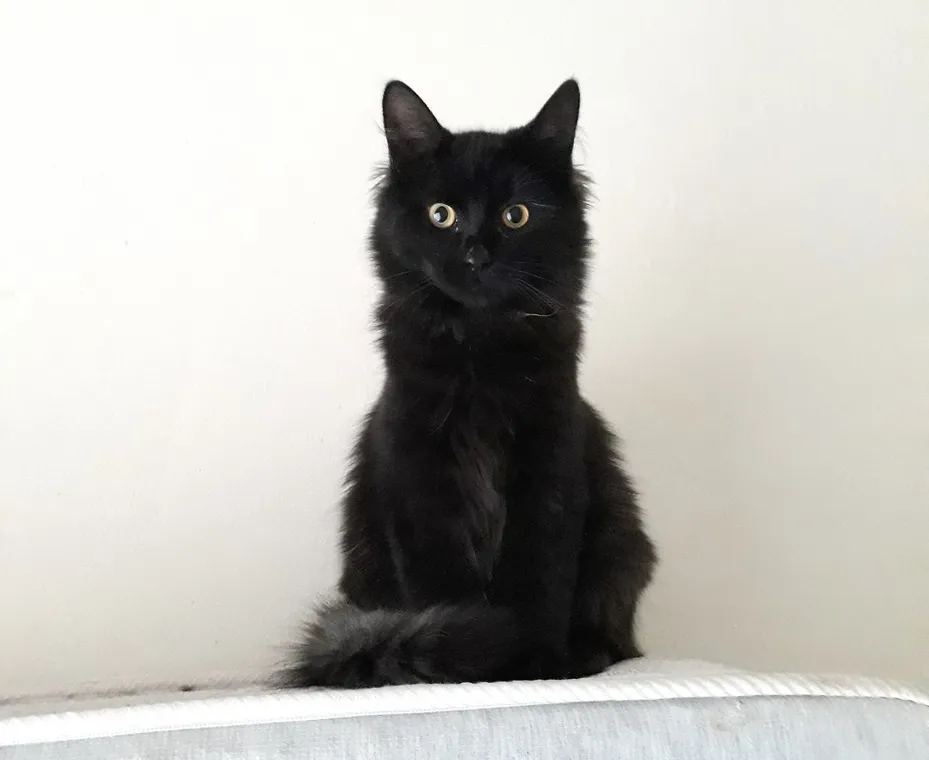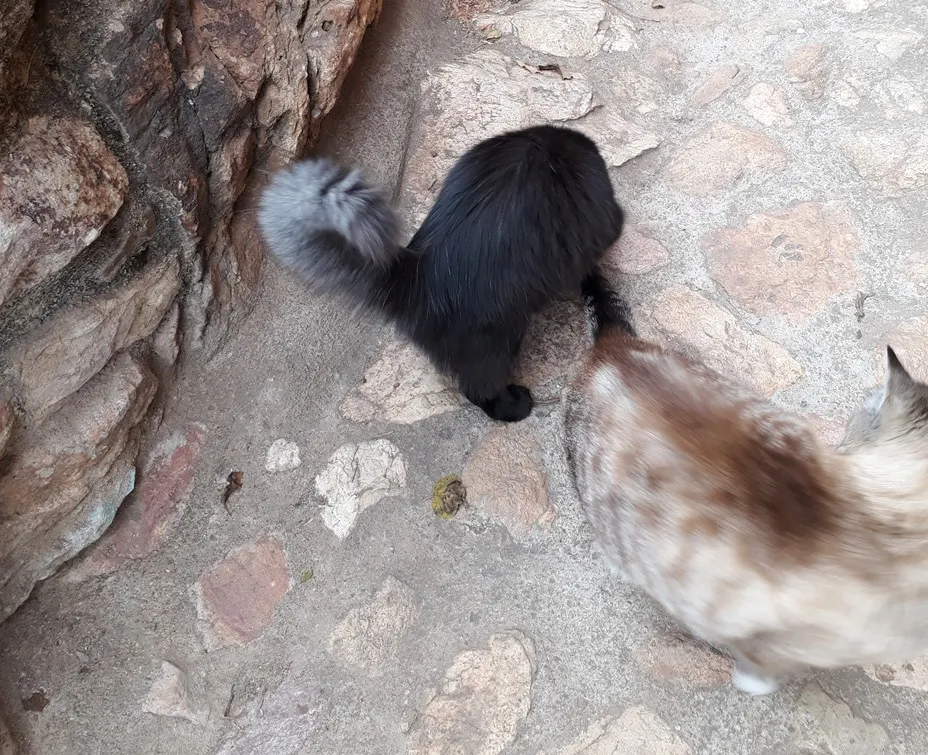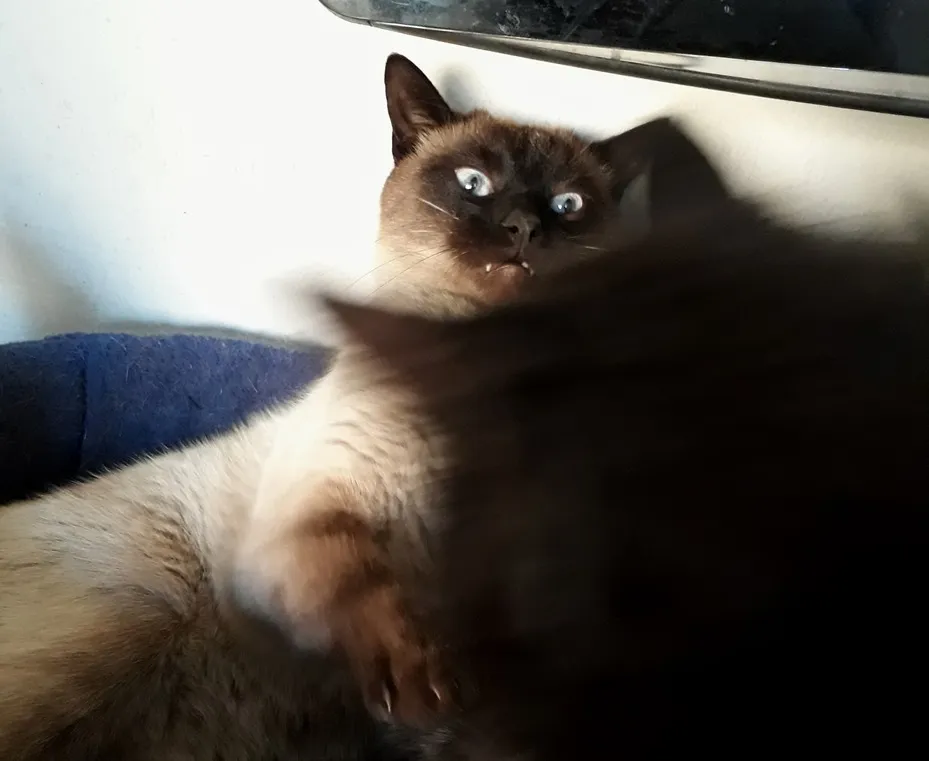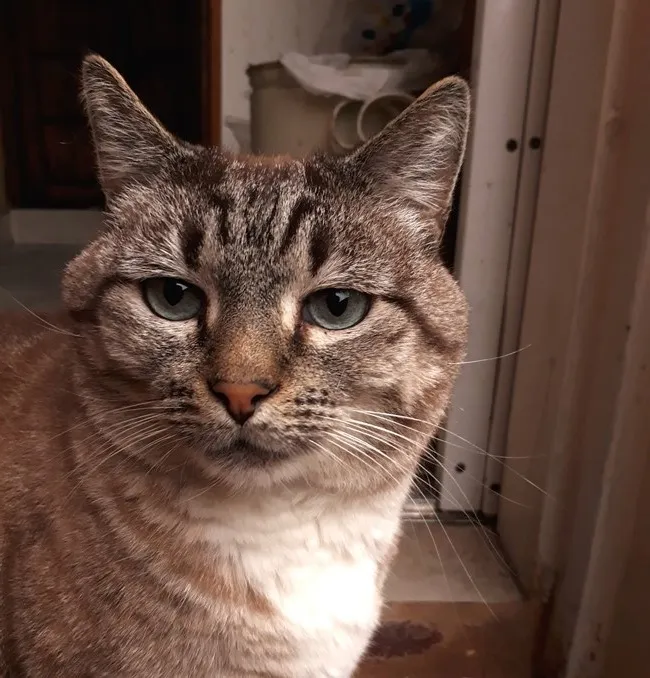
Wookie is just over 5 months old now and I photographed him in his old spot on the top of the mattress. Although he's little, it's clear that he's grown a lot in the last 3 months. The woman at the shelter is amazed at how well he has turned out: she really thought he'd be impossible to socialise. What helped was having him in the cage with his mother in an entrance, where he felt safe and could observe humans without being mistreated and his mother's calm presence helped him to relax. Once I got him home, he bonded quickly with me and then I was lucky that my tenants, who are animal lovers, helped him to deal with the idea of other people by allowing him to interact in his own time and not forcing themselves on him. Because he's young, he overcame his fears quite quickly.

That cute little grey tail of his has earned him the nickname of Squirrel and he's busy biting Toffee's tail here. Below, Peanut getting ready to repel the invader. I was less fortunate with socialising Peanut because at the time, there wasn't anybody else around that was willing and able to introduce themselves to him slowly, so he is still scared of other people although I think that's also just his Siamese nature. He's far from being a purebred Siamese cat but does behave a lot like one: he's quirky, active and vocal.

Up the tree outside my neighbour's place

Young kittens like Wookie and Peanut are relatively easy to tame and socialise because although both were abused and traumatised, they started life inside a house and only needed to learn different things about people whereas older strays and feral cats take a lot longer to tame.

Toffee, pictured above, was living rough close to my house when I moved in and he'd sneak inside to eat whatever leftovers he could find and spray urine for months but I couldn't catch him. He had a similar-looking brother who was even more elusive. I borrowed a cat trap but by coincidence, the day I brought the trap home, he limped inside while I was there, hungry and exhausted and all I had to do was close the front door, let him go upstairs and lock him in the bathroom. From there, he was fed and caged in the morning and taken to the vet to be neutered although no cause for his limping could be seen. I kept him inside for a week to rest and recover and fed him up and didn't interact much with him. Once I let him out, he disappeared but 3 days later he returned, hungry and limping badly. This time, I decided to tame him and locked him in the bathroom again and he had to have another vet visit because he developed an infection from fighting during the three days he was away. For some reason, the antibiotic treatment also cured his limp - he must have had a deep-seated old infection somewhere in his leg or paw.
Taming him required spending time in the bathroom every day, without trying to touch him, to let him get used to me. He was often aggressive if I tried to touch him and then I would stop interacting and leave the room. Eventually, he became more relaxed, his aggressive male hormones subsided and after a month I let him out and he remained around the house. Teaching him to trust again has taken years. Although he was obviously someone's cat, I think that he was also mistreated and his 8 or so months of living rough didn't help.
He needed the period of enforced taming for his own health and safety because cats like him don't have the luxury of time. His brother died around the same time: I hadn't seen him in months and then there was this smell... He was nearby all along but like most stray tomcats he probably died from infected wounds after fighting.
